Mosaic, derived from the Latin term, refers to the intricate art of inlaying wood and carving it. This artisanal craft, deeply rooted in the rich cultural heritage of Damascus, is not merely an art form but a cherished legacy. Originating from the ancient city of Damascus, mosaic craftsmanship has been integral to the region’s architecture, including palaces, baths, mosques, public libraries, and private homes. Often described as the “Dean” of all decorative wood arts, mosaic has a unique ability to transform wooden surfaces into stunning works of art.
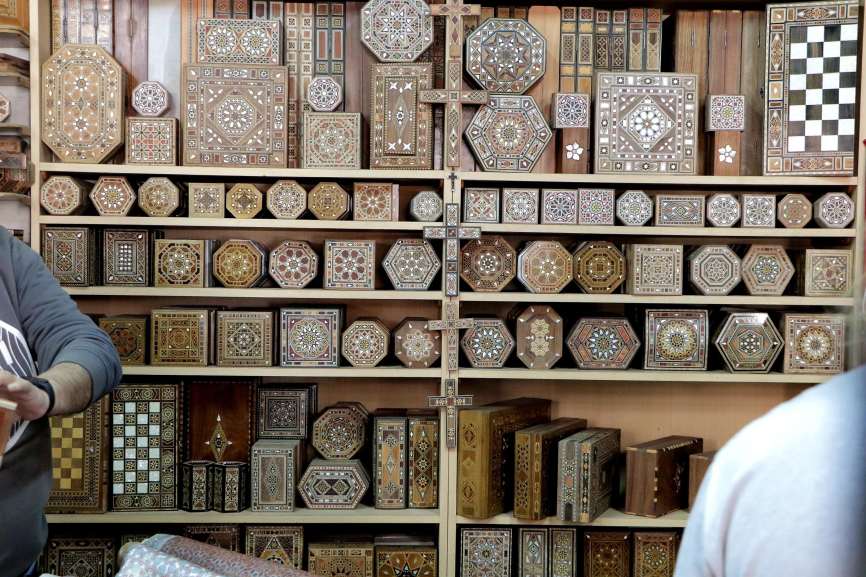
The Evolution of Damascus Mosaic
The craft of Damascus mosaic dates back to the 19th century. The modern iteration of this art form was pioneered by George Bitar (Jorji Beitar), a prominent figure who established the technique in its current form. Born in 1840 in the heart of the Damascus neighborhood of Bab Touma, Bitar initially trained in traditional woodworking. It was his innovative spirit that led him to experiment with colored wood and create the first piece of mosaic in 1869.
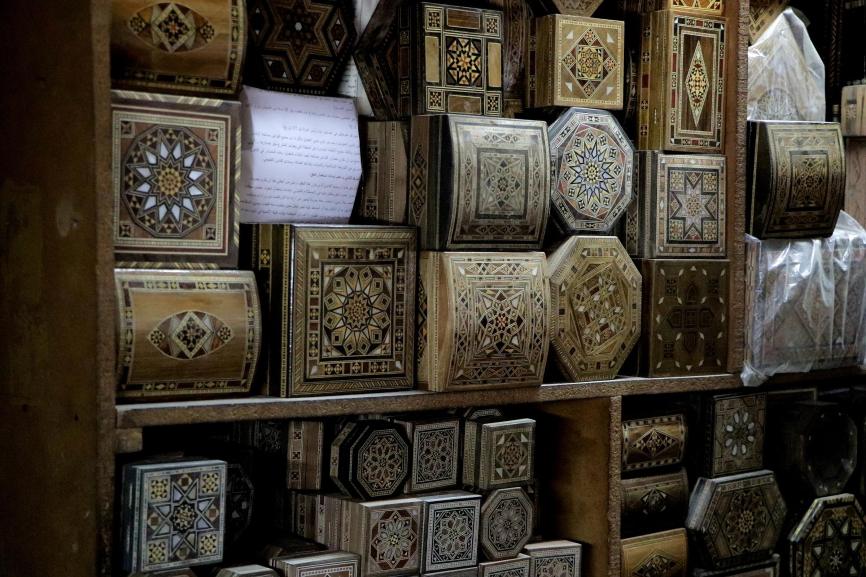
Bitar’s breakthrough came when he discovered that different types of wood, such as lemon, rose, walnut, and eucalyptus, could be used to produce a palette of vibrant colors. He skillfully cut these woods into geometric shapes like squares, hexagons, diamonds, and triangles, assembling them into intricate patterns. This method enabled him to produce what is now recognized as the classic Damascus mosaic, often seen on wooden inlays and decorative panels.
To enhance the mosaic’s visual appeal, Bitar incorporated camel bone, a substitute for ivory. Over time, camel bone turns a pleasing shade of yellow, which added a distinct touch to his designs. Additionally, he introduced mother-of-pearl into his mosaics. The mother-of-pearl used was sourced from the Sea of Galilee, not the Mediterranean, and was expertly processed by a local artisan known as the “Sadaf” to achieve its characteristic sheen.
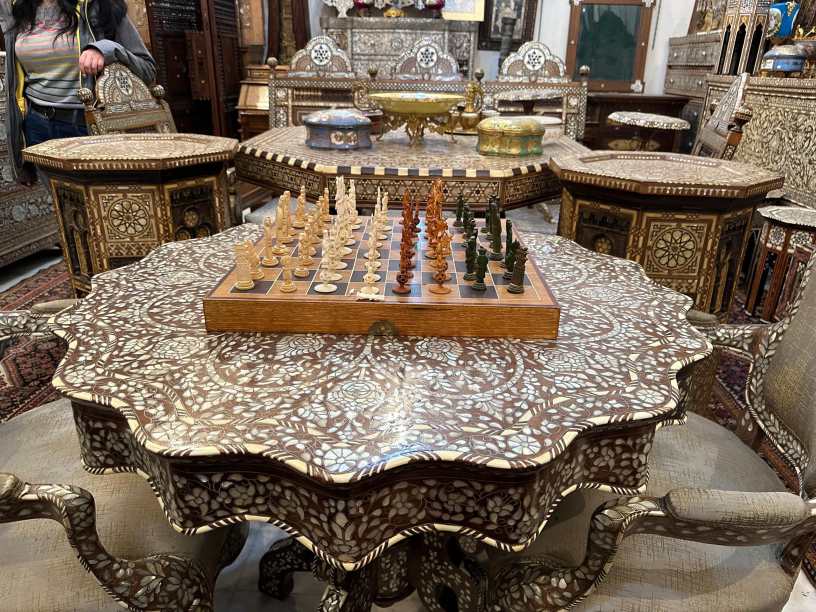
Bitar’s influence extended beyond Damascus. In 1891, he showcased his mosaic creations at the Vienna Exposition, garnering international acclaim. His work traveled as far as Rome, where he presented a magnificent piece to Pope Pius X, and even reached the United Nations headquarters.
The Legacy and Craftsmanship
The art of Damascus mosaic has witnessed a decline in recent years due to the emigration of artisans and the economic impacts of conflict. Despite these challenges, the tradition continues to be a symbol of Syrian heritage. The craft relies heavily on patience and skill, with each piece meticulously crafted by hand. Traditional techniques have been maintained even as technology has introduced more efficient methods.
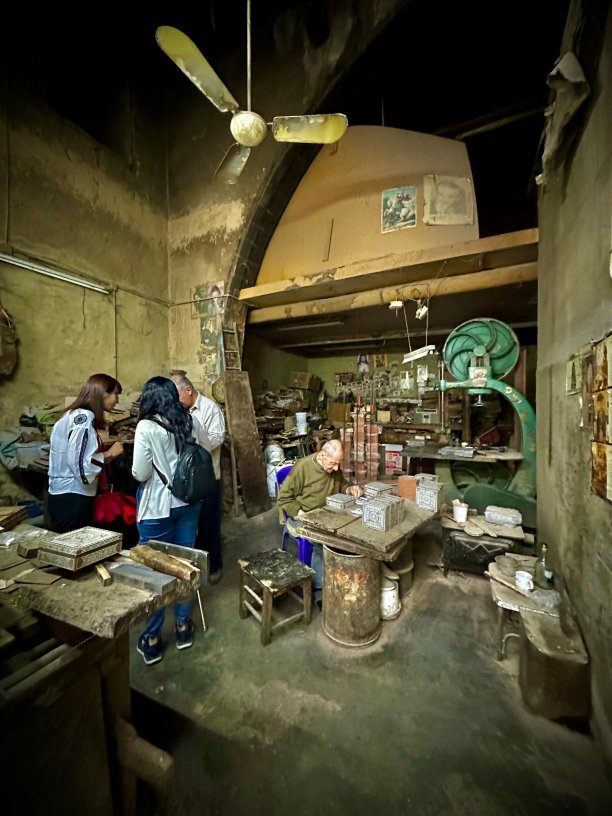
Crafting a mosaic piece involves using various local woods such as walnut, lemon, olive, and eucalyptus. The process begins with cutting the wood into precise geometric shapes and then assembling them into complex patterns. The final touch involves applying a finishing polish using a material known as “khamala” to enhance the colors and add a glossy finish.
The intricate artistry of Damascus mosaic is evident in the work of artisans like George Bitar, who trained many craftsmen in the technique. This legacy has been carried on by subsequent generations, ensuring that the art form remains an integral part of Syrian cultural heritage.
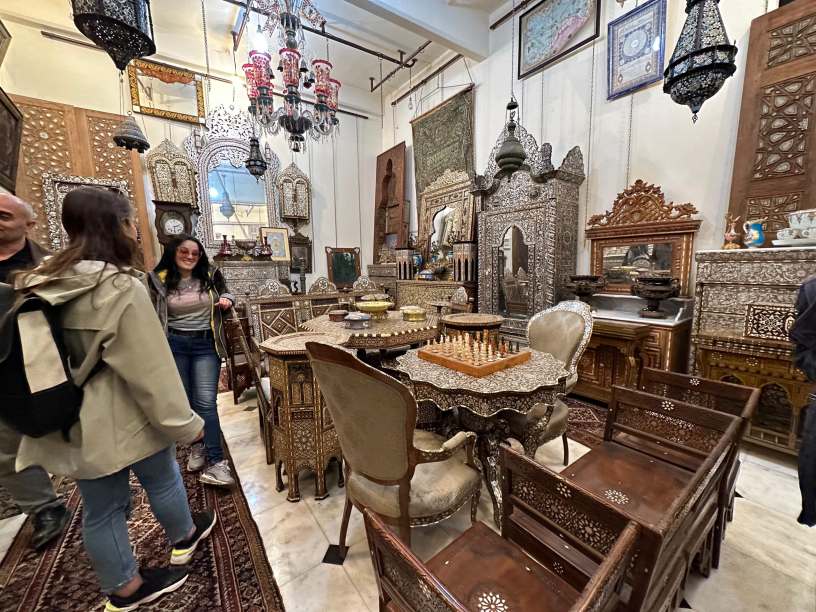
Experience Damascus Mosaic Firsthand
For those interested in exploring this exquisite art form, join our tours and visit a mosaic workshop to witness firsthand how Damascus mosaics are made. This unique experience allows you to see the craftsmanship up close and appreciate the dedication that goes into each piece of mosaic art.
Additionally, visit the house of Jerji Bitar, the inventor of the mosaic handicraft. His home is now a hotel called Via Recta hotel, located in the ancient city. Inside one of the rooms, you can view the bed of Jerji Bitar, a masterpiece of mosaic art that has aged gracefully for more than a hundred years.
Experience the beauty of Damascus mosaic and become a part of its enduring legacy.
For more information about our tours and to book your visit to a mosaic workshop or Via Recta, please contact us.
